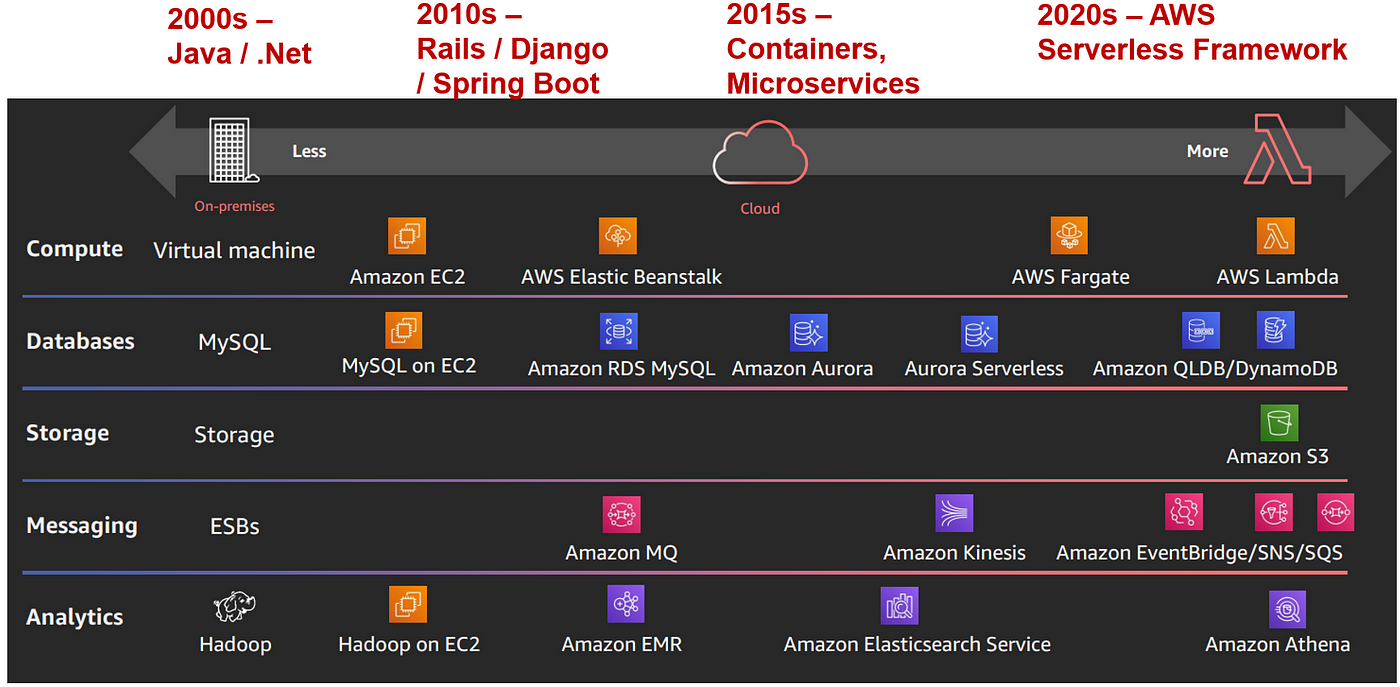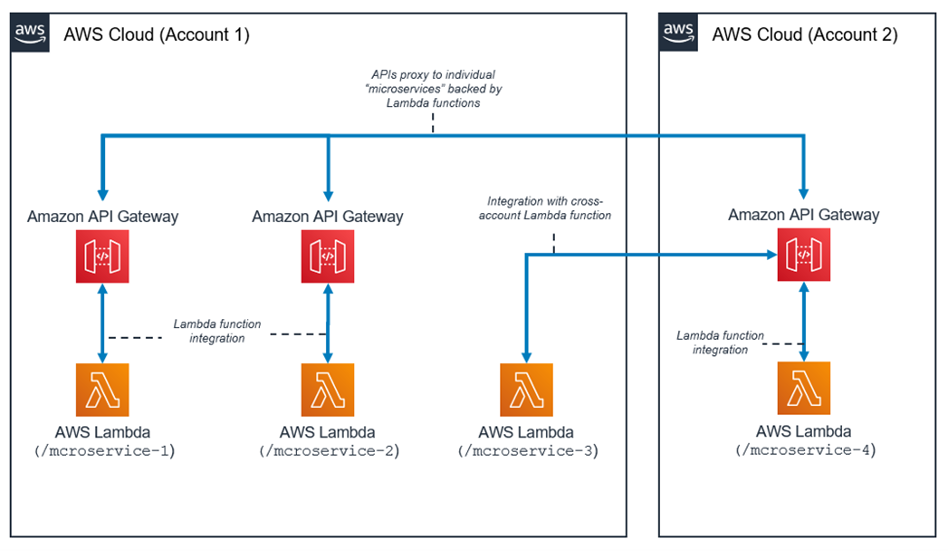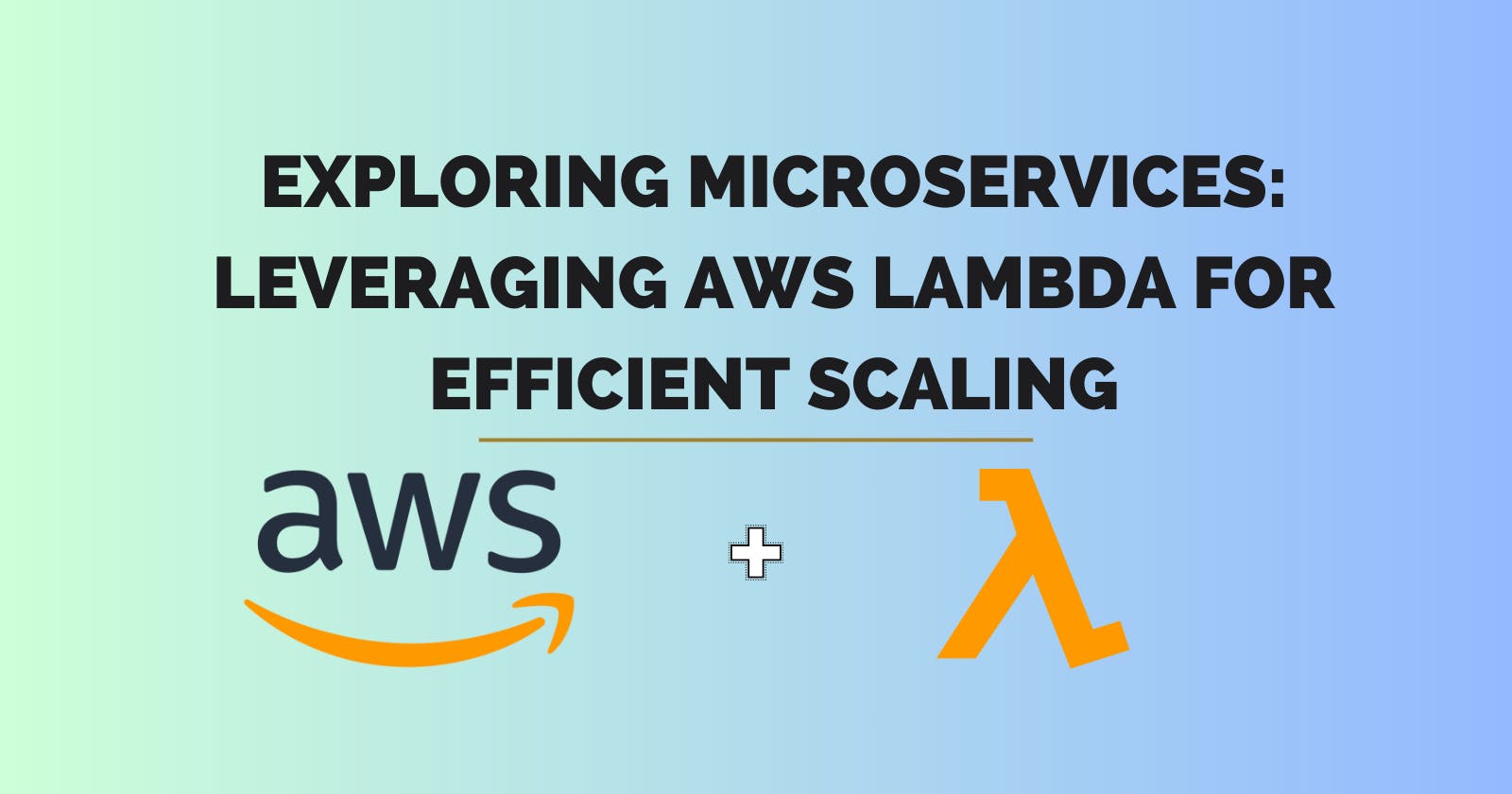Exploring Microservices: Leveraging AWS Lambda for Efficient Scaling
Imagine revolutionizing your e-commerce application with lightning-fast scalability and minimal infrastructure management. In this blog, we're about to unveil the game-changing power of AWS Lambda as a microservice in crafting a serverless e-commerce solution.

Fig 1: Serverless Event-driven E-commerce Microservices Architecture
Towards the conclusion of this article, we will outline a real-world serverless e-commerce application reference architecture based on the concepts discussed above.
AWS as an Application Development Framework
At the heart of the AWS Serverless ecosystem lies AWS Lambda, a foundational service that drives the architecture of our serverless e-commerce microservices. With AWS Lambda positioned as the centerpiece, we'll craft our serverless e-commerce solution, harnessing its capabilities to design a highly efficient and scalable microservices architecture.

Fig 2 : Evolution of AWS Infrastructure
Before we start, let’s remember What are Microservices ?
What are Microservices ?
Microservice are small business services that can work together and can be deployed autonomously / independently.
These services communicate with each other by talking over the network and bring many advantages with them. One of the biggest advantages is that they can be deployed independently. Also, it offers the opportunity to work with many different technologies.

So we can say that, Microservices;
have their own technology stack, included the database and data management model;
communicate to each other over a combination of REST APIs, event streaming, and message brokers;
are organized by business capability, with the line separating services often referred to as a bounded context.
When it comes to AWS Lambda, AWS Lambda is using for greater agility. It is clear that microservices can help companies be more agile and develop software faster.
So where does AWS Lambda come into the equation?
AWS Lambda as a Microservice
AWS Lambda is a service that allows you to run your functions in the cloud completely Serverless and eliminates the operational complexity. You upload your code to Lambda, and it takes care of everything needed to run and scale its execution and fulfill conditions and high availability requirements. Lambda supports several programming languages so you can choose the most suitable.
It integrates with the API gateway, allows you to invoke functions with the API calls, and makes your architecture completely Serverless. There are several ways to invoke a function: an event, another AWS service, or another service or application.

Refer : https://docs.aws.amazon.com/whitepapers/latest/microservices-on-aws/serverless-microservices.html
So can we put AWS Lambda as a microservice in our Serverless E-Commerce application.
You can see the figure above that shows the architecture of a Serverless microservice with AWS Lambda, where the entire service is built from managed services, which removing the architectural overhead of designing for scaling and high availability, and eliminating the operational efforts of operating and monitoring the microservice’s underlying infrastructure.
Serverless Microservices with Lambda
In microservices architecture, each of the application components is decoupled and deployed and run independently. An API created with Amazon API Gateway, and then AWS Lambda-initiated functions is all you need to build a microservice. Your team can use these services to decouple and segment your environment to the desired level of detail.
In general, a microservices environment can introduce the following difficulties:
repeated overhead for create each new microservice,
problems optimizing server density and usage,
complexity of running multiple versions of multiple microservices at the same time,
and client-side code requirements to integrate with many services.
When you create microservices using Serverless resources, these problems become less difficult to resolve and, in some cases, simply disappear.

Refer : https://docs.aws.amazon.com/whitepapers/latest/microservices-on-aws/serverless-microservices.html
The Serverless Microservices Pattern reduces the barrier for the creation of each subsequent microservice. API Gateway even allows for the cloning of existing APIs, and using of Lambda functions in other accounts.
Optimizing server utilization is no longer relevant with this pattern. Finally, Amazon API Gateway provides programmatically generated client SDKs that are programmatically built in a number of popular languages in order to reduce the integration overhead.
You can see the figure above that shows the architecture of a Serverless microservice with Amazon API Gateway and AWS Lambda. So API Gateway APIs proxy to individual microservices backed by Lambda functions. You can see the microservices-1–2–3–4 that proxy by API Gateway and all of microservices handle with AWS Lambda functions.
So now we are ready to develop our enterprise E-Commerce application with fully Serverless Event-driven Microservices Architecture using AWS Lambda as a Microservices.
AWS Serverless Microservices for Ecommerce Application Architecture
Here you can find the main overall Serverless Architecture for our application. This is the big picture of what we are going to develop together for AWS Serverless Event-driven E-commerce Microservices application that is Step by Step Implementation together.

Serverless Event-driven E-commerce Microservices Architecture
We will be following the reference architecture above which is a real-world Serverless E-commerce application and it includes;
REST API and CRUD endpoints with using AWS Lambda, API Gateway
Data persistence with using AWS DynamoDB
Decouple microservices with events using AWS EventBridge
Message Queues for cross-service communication using AWS SQS
Cloud stack development with IaC using AWS CloudFormation CDK
In this article, we've outlined the architecture for a real-world serverless e-commerce application. It includes REST API and CRUD endpoints using AWS Lambda and API Gateway, data storage via AWS DynamoDB, microservices decoupling with AWS EventBridge, and cross-service communication with AWS SQS. We'll explore the implementation in part 2. Stay tuned for practical insights on building this solution on AWS.
